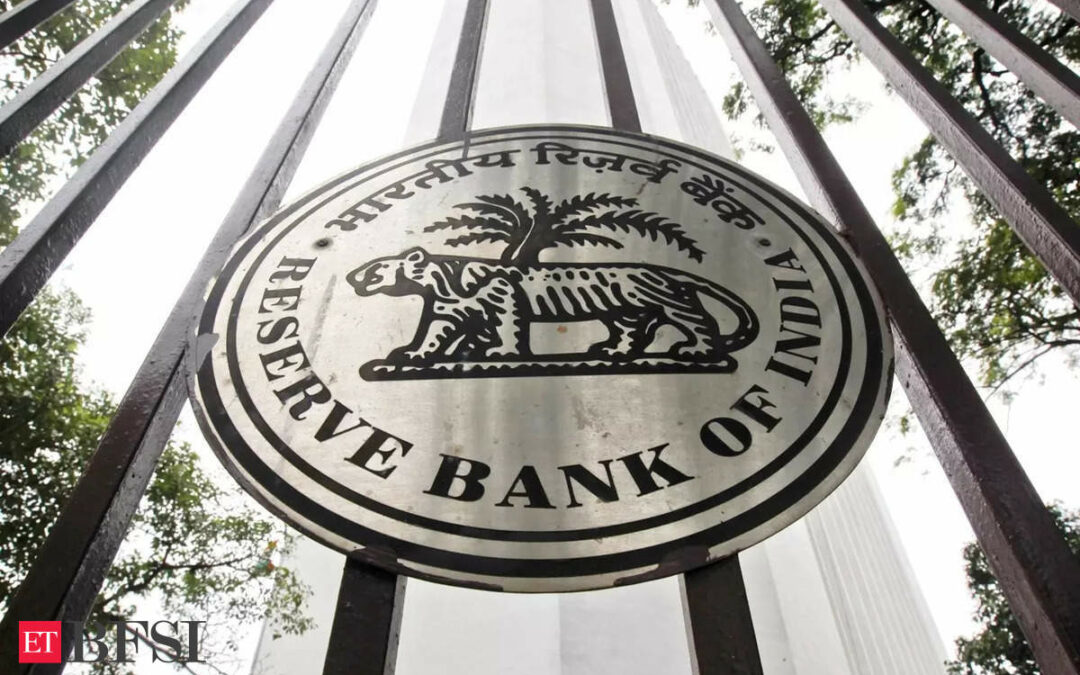-Riddhima Gupta
Economists express their views on the decisions and developments of the Reserve Bank MPC Meet. They discuss the unchanged policy rates, imposition of the ICCR and its impact on the liquidity in the economy and expectations for inflation & growth.
Indranil Pan, Chief Economist, Yes Bank
There were no surprises in the policy and unlike market expectations, there was no hawkish bend to the commentary. However, as any good central bank would do, the RBI signals that it would continue to look ahead and factor in its anticipated inflation trajectory into future monetary policy decisions. Effectively, the RBI will be looking through the likely spikes in the near term retail inflation as a result of the sharp increases in vegetable prices.
The expectation is for such seasonal variations to dissipate with the arrival of the new crop – indicative in the inflation forecast of the RBI. While the RBI has sharply increased the Q2 inflation forecast, the Q4 inflation forecast has remained unchanged. The vigil on inflation would continue to factor in all the moving pieces and the RBI keeps itself open to deploying all instruments that could be necessary to align inflation to the 4% target. Even as the rates remain unchanged, the RBI opined that excessive liquidity can pose risks to price stability. The RBI has attempted to neutralise the liquidity impact of the Rs 2000/- notes into the banking system and has imposed an additional CRR burden of 10% of incremental NDTL from 19th May onwards.Upasna Bhardwaj, Chief Economist, Kotak Mahindra Bank
The MPC preferred to remain on a wait and watch mode along expected lines. We believe that the seasonal uptick along with erratic weather conditions will continue to keep the hawkish bias of the MPC intact in the upcoming meetings as well. However, we expect the rates to remain unchanged through the rest of the year as they evaluate the impact of earlier monetary tightening in growth and inflation.
Abheek Barua, Chief Economist and Executive Vice President, HDFC Bank
The RBI kept its policy rate unchanged as expected at 6.5% but its message was clearly hawkish. This was reflected in the upward revision in Q2 FY24 inflation forecast by 100bps to 6.2% and the decision to tighten liquidity through the incremental CRR for banks. The latter could reduce system liquidity balance by INR 60-70K crores. While the ICRR decision is to be reviewed in September and could be a temporary decision, if inflation pressures linger on, the possibility of continued durable liquidity tightening is likely.
The RBI reiterated its resolve to bring inflation back to 4% on a sustainable basis and highlighted risks beyond the transitory vegetable price pressures. We expect inflation to average at 5.6% in FY24 with inflation expected to print above 6% till September.
D.K. Srivastava, Chief Policy Advisor, EY India
Owing to the seasonal inflationary pressures especially on vegetable prices, the RBI has revised upwards, its CPI inflation projection for the second quarter of 2023-24 by 1% point from its earlier estimate of 5.2% (June 2023) to 6.2%. The annual inflation has been revised upwards to 5.4% for 2023-24. Real GDP growth estimates remain buoyant at 6.5% for the current year. Relying on domestic demand to take care of growth in spite of the continued supply-side challenges, the RBI has kept the repo rate unchanged at 6.5% with continued monitoring of the liquidity situation. The fiscal landscape provides considerable reassurance for maintaining investment momentum. The central government has demonstrated proactive measures by front-loading its capital expenditure, resulting in a remarkable growth of 59.1% during the first quarter of 2023-24. This prudent fiscal approach contributes significantly to the overall environment for sustainable investment.
Nikhil Gupta, Chief Economist, MOFSL Group
As widely expected, the RBI kept all key interest rates unchanged with unanimous votes. The stance was also kept unchanged with 5-1 votes (except Prof. J Varma).
However, an incremental CRR of 10% of NDTL will be applied on additional NDTL attained between 19th May 2023 and 28th July 2023 by the banking system. The Governor didn’t specify the exact amount, but mentioned that it would be more than INR1tn (our calculations suggest ~INR1.3t).
Highlighting rising vegetable prices, the RBI has revised its FY24 inflation forecast to 5.4%, from 5.1% earlier. The revision in QFY24 is in line with our forecast but RBI appears to be more cautious and see it as more sticky than our estimates. The FY24 growth forecast was kept unchanged at 6.5%.
Overall, the incremental CRR was unexpected and a reduction in liquidity surplus represents monetary tightening. We expect no further hikes in interest rates in India and also believe that actual inflation in Q3 could be lower than RBI forecasts.
Madhavi Arora, Lead Economist, Emkay Global Financial Services
The Imposition of Incremental CRR (ICRR) of 10% on NDTL (for period of May 19 to July 28 ) would imply a temporary liquidity depletion of ~Rs1.15tn/Rs996bn (ex of HDFC twin merger). This assumes an effective CRR of 14.5% for the period concerned (4.5%+10%).
However, if we assume the ICRR of 10% to include the existing CRR of 4.5%, the liquidity depletion would amount to Rs 650bn/Rs 548 bn ex of HDFC twin merger. We await clarity on RBI’s assessment of ICRR in the press conference. But we believe it has to be the former (i.e 14.5% effective CRR)
Overall, this would also lead to some interest loss for banks, as banks were parking the short term liquidity into short term personal loans and money markets, instead of parking with RBI in VRRR, which also helped in some softening of CP/CD rates.
The immediate impact of RBI absorbing liquidity via ICRR will be mild hardening of money market rates for borrowers including NBFCs/corporates, while for banks as well there will be slight impact on their NIMs (3-4 bps) depending on the instruments where they were parking the money (assuming 14.5% effective CRR).
That said, some banks (PSBs specifically) benefitted more than others from the liquidity glut due to Rs2K notes withdrawal, while others toiled to get deposits by increasing rates.
However, all the banks will have to maintain ICRR and thus could be construed as unfair to some banks who did not benefit much from the Rs2K notes withdrawal (mainly PVBs).
As expected, RBI fired warning shots for Banks/NBFCs given the aggressive lending (unsecured loans) and they need to retain adequate provision buffers. As per our banking team, this will force regulated entities to maintain higher PCR or atleast discourage them from reversing provisions (thus some impact on RoA).
Notably, ICICI, HDFC, Axis amongst banks have maintained a strong contingent buffer amongst banks (0.7-1.2%) and thus should not have any impact.
Achala Jethmalani, Economist, RBL Bank
The MPC’s decision is seen as a ‘hawkish pause’. The RBI tinkers with liquidity to align it with the current monetary policy stance to enhance transmission of prior hikes. Upward revision in inflation forecasts while watching any persistence of idiosyncratic price spikes, strengthens the case of ‘higher for longer’, a theme that is playing out globally too. As India CPI inflation starts tapering-off in 2H FY24, we expect the repo rate to remain unchanged at 6.50%. Any price shocks could alter expectations.
Rajani Sinha, Chief Economist, CareEdge Ratings
RBI’s decision to maintain the status quo on the policy rate was on the expected lines. However, it sounded more cautious than the last two meetings, with a significant upward revision in the inflation numbers for the upcoming quarters. Given the transient nature of the seasonal shocks, the RBI will wait for more data points to evaluate the emerging inflation dynamics and will likely look through any temporary rise in inflationary pressures in the near term. With the steep upward revision in the inflation projections, the expectation of a rate cut is pushed further to the next fiscal. Additionally, the announcement of a temporary provision of incremental CRR will help remove the build-up of excess liquidity in the system
Radhika Rao, Executive Director and Senior Economist, DBS Bank
The RBI MPC commentary on Thursday can be characterised as a pause with hawkish underpinnings. The decision and commentary were in line with our expectations, as highlighted in the preview note. The accompanying commentary reflected the MPC’s vigilance on inflation while highlighting the supply-driven nature of the recent run-up in food segments. Policymakers drew confidence from a moderation in core prints and expect a seasonal correction in food in 4Q23, but this was balanced with an emphasis that further action will be warranted on signs of un-anchoring in inflationary expectations as well as if inflation stays above the mid-point target of 4% on a durable basis. The evolving inflation trend is likely to be watched closely, pushing back rate cut expectations, especially as trend inflation is likely to remain above 5% heading into FY25.










